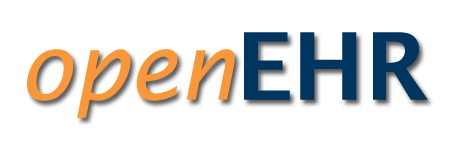openEHR - Strengths & Weaknesses
Technical Reference

Introduction
openEHR - often pronounced "open air" - is at the same time the newest and oldest member of the Healthcare Interoperability Family (well, lest's say as old as HL7 or EDIFACT for healthcare). Conceptually it is a data model for structured healthcare data that is open and shared. This idea grew out of work done in the 1990s funded by European research money. The openEHR history page gives a good overview of this. It was picked up by a couple of commercial companies (especially in Australia) and is now used as a basic technology approach in some important Electronic Healthcare Record (EHR) projects across the world.
It is a data modelling approach to sharing healthcare data interoperably. If everyone adopts the same model (or description of data) and exposes that through web services, then everyone has access to all the data. Of course life is not so simple and most EHRs throughout the world are sold by commercial companies, and so come with Intellectual Properties strings attached - companies are not keen to open up their data models and access to data to help other companies leverage value from the market. In a way, the battle for the owership of data and how interoperability liberates that data is most starkly shown in the openEHR approach. If that is a measure of 'interoperability' then this would point to openEHR bing the most interoperble method of the three (along with IHE and FHIR). It does beg the question, who's data is it anyway? - surely the patient's - right?
Strengths of openEHR
Clinical Data Modelling
The strengths of openEHR are based in the dual elements of its detailed data modelling and the Clinical Focus of its data modelling. In a way, all interoperability standards for healthcare are tools to implement deconstructed health records (with multiple participating systems and organisations providing the whole). openEHR is the ultimate deconstruction allowing you to build whatever data model you like.
The advantges of openEHR are;
- The data modelling methodology provides a strong foundation for any healthcare record - and by it's nature guarantees that all the structured data is available through open APIs.
- A Shared Data Model between systems and applications means the interoperable use of that data is in-build to the standard.
- The clinical structure to the data means it is easier to map clinical use cases into the data sharing paradigm.
Weaknesses of openEHR
Inertia and Resistance
The disadvantges of openEHR are;
- It takes a lot of skilled resources to implement - data modelling is not a trivial task.
- Internationally, there are not many implementations - not implementing companies.
- It is hard for existing healthcare records suppliers to change or open up their data models.
- No Audit in the data model. Audit is either implied in the coltrol of the participating systems with respect to their user access (as it is in FHIR) or defers to use to an IHE Audit Trail.
- No workflow. openEHR as an global organisation are working on this, but it is compliacted by the granular nature of the data that can collectively managed through openEHR (less simple than the IHE publish/subscribe model).
